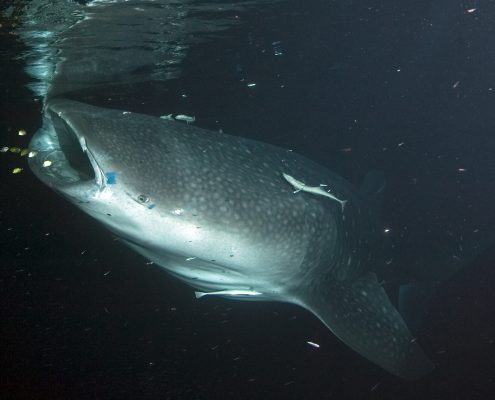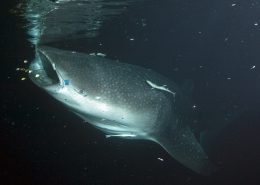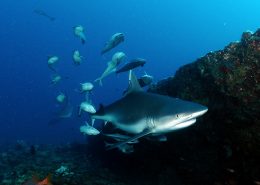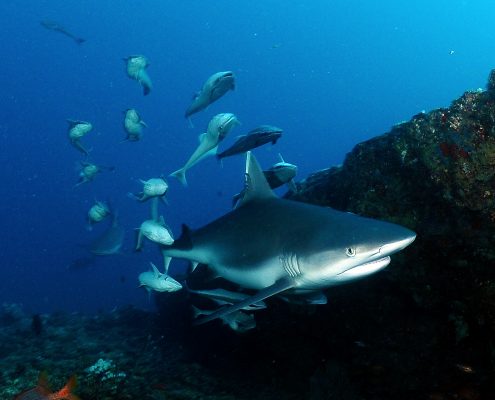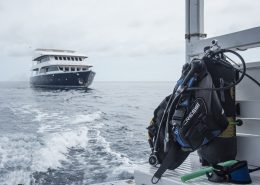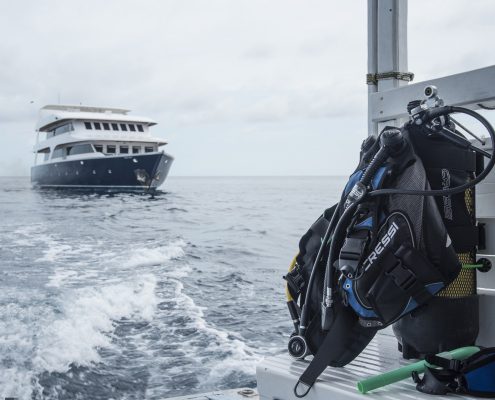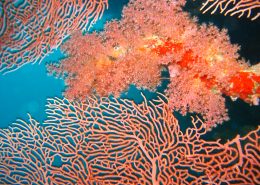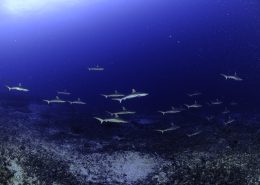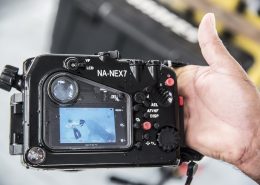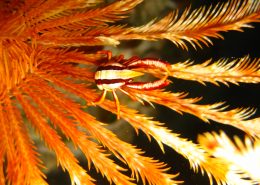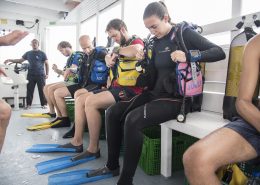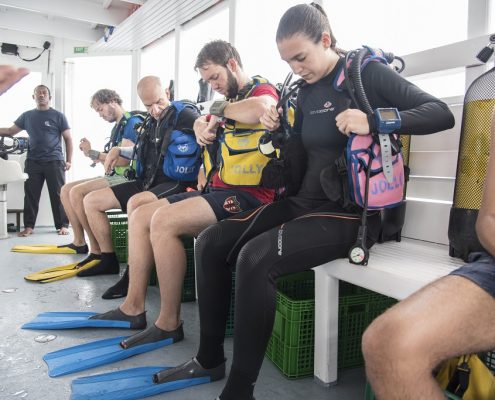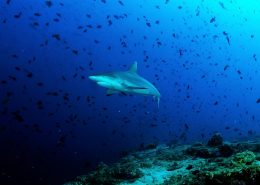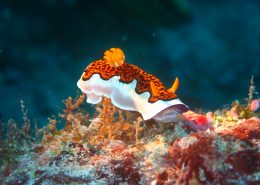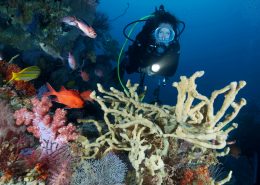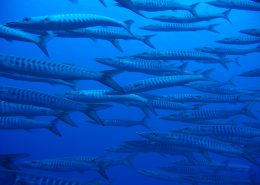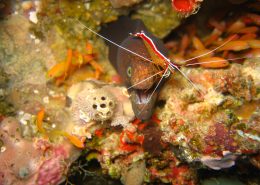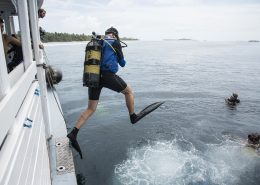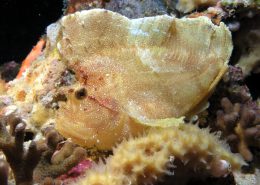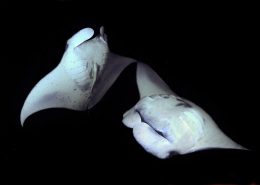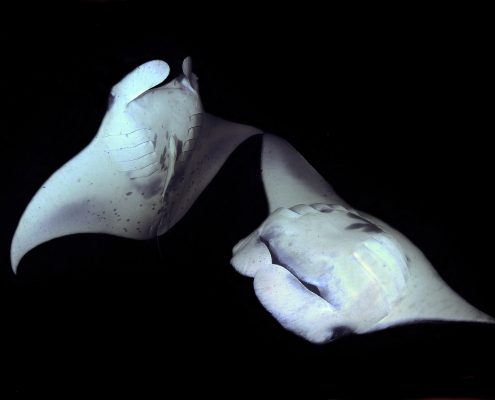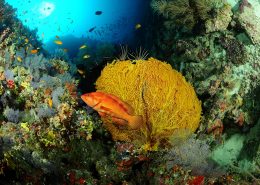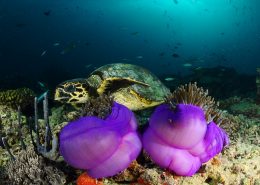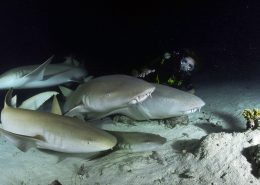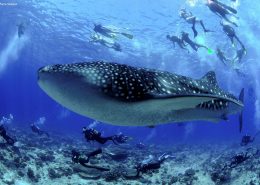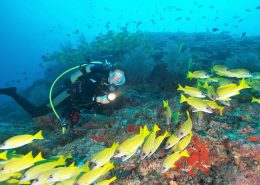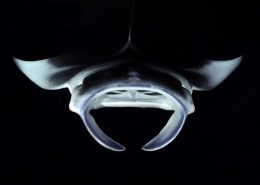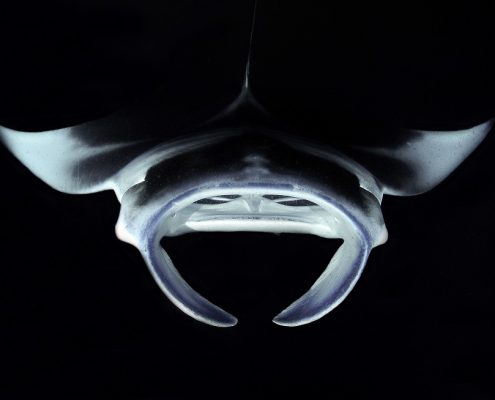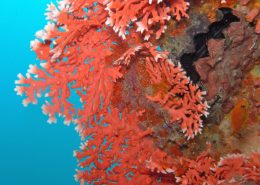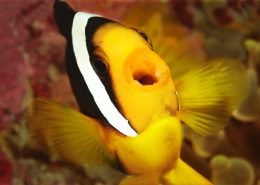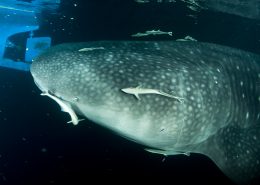Scuba Diving in Maldives
Diving in the Maldives is like nowhere else.
Maldives is one of the most desired and dreamed destination among the scuba diving community. Colourful reef, big pelagic fish and tiny brilliant sea life render this destination unique and inviting. If you have never been here, well, that’s a must! Diving in Maldives is comfortable, some time a little bit challenging, and definitely stunning.
In the same dive you can encounter big grey reef sharks and small colourful reef fish. If you want a preview of the interesting creatures that you may find during your dives, here you are: grey reef sharks, white-tip sharks, nurse sharks, leopard sharks, mantas, eagle rays, devil rays, sting rays, swarms of trevally and barracuda, frogfish, leaf fish, schools of snappers, batfish and doctor fish, crabs, nudibranchs, sea worms and many different types of colourful soft and hard corals and sponges.
Read more
The Maldive coral barrier is one of the most beautiful in the world. It is an archipelago entirely of coral. The Maldives were formed 57 million years ago when the Indian tectonic plates moved over the hot point of the Reunion. The hot waters, the strong currents and the nutritious wealth have done the rest, molding the Maldives into what we see today. The lack of strong climatic disruption has preserved this reef and attracted a large quantity of creatures of many species and sizes. The soft and hard coral grows in large quantities along the walls and shallows giving hospitality to a multitude of small creatures. From the most common red Anthias to the most rare of leaf fishes, going through allthe members of their numerous family. There are many interesting invertebrates from many crustaceans and coloured shell-fish, not forgetting sponges, ascidians etc. Swimming around these are the bigger fish – Grey and White Fin Sharks, Sting Rays and Mantas are frequent visitors to the Maldive reefs. Not to be missed are the rare giant Groupers which can measure up to 3 metres in length and the giant Whale Shark. The easiness in which one can observe this creature, even with mask and snorkel, from the surface, has made the Maldives famous and frequented by sea and nature lovers from all over the world. The life cycle of these animals , as for their presence along the reef, is largely influenced by the seasonal changes of the currents.
The Winter period (December-May) is the best time to go scuba-diving in the eastern passage, this has become famous in the Maldives because of the enormous quantity of pelagic fish to be found here. The Macana guide will choose the right point of entry and after an emotional descent in the blue waters you will find yourself engulfed by banks of fusiliers fish and surgeonfish. In just one dive it is possible to find oneself in front of ten or more sharks moving along with the current, undisturbed by the ceaseless flow of the water, showing their capacity as strong swimmers and dominators of the reef. Along the steps you will frequently encounter rays which rest on the seabed or remain suspended on the current, looking like real U.F.O’s. Eagle rays swim elegantly up towards the sunlight, in shoals and frequently individually, towards the angles of the pass, dodging the shoals of barracuda and carangid, which surround them until they can avoid the divers, who for what they know, might well be dangerous predators. The large tuna fish with their mass of over 1 metre in length, their swimming speed and their strong teeth are less intimidated by the scuba-divers. Their thoughts that a scuba diver might be a potential predator quite amusing. With a bit of luck it is also possible to encounter animals which occasionally come close to the reef, such as the large Hammer Shark, Fox Shark, Tiger and Silvertip Sharks. All of these are seen regularly along the Maldives but live in deep waters and a long way from the coral barrier which they use for food supply. In shallow waters you will encounter small coral fish, turtles and nurse sharks. You can also dive along the coral walls covered with soft pastel coloured corals.At the bottom beautiful giant gorgonians host an incredible micro-fauna. It’s also possible to dive along the western side of the reef, where the monsoon currents flow inside the atolls towards the ocean carrying with it plankton which makes this area a stop off for the large filterers all year round. The Mantas are a regular sight in the atolls and to the west during the Winter season and sometimes the large Whale Shark has a pit-stop here, seeming to smile at the divers, and us the small fish make lots of bubbles.
The Maldives are dominated by two monsoon winds. From December until May the wind blows from the north-east generating an oceanic current in a east-westerly direction which brings limpid waters full of nutrients along the east of the Maldives where the large hunters await their prey. The waters don’t stop on the east but cross the entire atolls loading up with plankton and exiting west where the large filterers, Mantas and Whale Sharks, await their favourite food. From June to November the situation is inverted. The wind arrives from the south-west bringing limpid waters to the west and murky waters to the east because they are then full of plankton. Obviously the waters tend to enter and exit the atolls where there is less resistance and more space. This passage of water (where the boats can pass) is called “pass”, and it is here that the highest number of animals and corals can be found.
Having said this it is easy to understand that in different periods of the year, animals that we are interested in will only be found in certain areas of the Maldives. This is the advantage of a cruise in comparison to a holiday village. Being in the right place at the right time. When you are on a cruise you don’t have to think when will it be the right time to go scuba-diving because we will arrange cruises in the best areas of this archipelago based on the time period.
The Summer period (May-December) is characterized by a south-westerly wind which generates west-eastbound currents. The waters are very limpid along the western atolls attracting fish and Macana Maldives Boats and these are the main destination of the cruises. The characteristics of the atolls are in the shallows in the internal part of the pass or very close to them. That is the fascinating coral banks which sit on the sea bottom, locally called thila. These thilas are covered by a multitude of hard coral and a large quantity of wonderfully coloured soft coral. Inside shoals of coralline fish swim amongst packs of sharks and other pelagic fish. With the limpid water it is much easier to appreciate an encounter with these animals which are much more used to scuba-diving to whatever else passes there and therefore very easy to photograph! This is also the ideal season to encounter the Hammerhead Shark which will always remain in the memory of a scuba-diver. Even in this season it is possible, following the migration, to dive amongst packs of Mantas. One of the most fascinating encounters which is possible all year round is with the Whale Shark. Puppies measuring about 7/9 metres in length have chosen to live in this particular area of the Maldives and there is a 90% possibility of encountering and swimming along-side them all year round. During the cruise and depending on the itinerary various scuba-diving proposals will be made to visit wrecks. These wrecks aren’t of any historical interest but they are completely covered with soft and hard coral and various fauna and other life which lives there. Lion fish, Lobsters, Groupers and Moray eels live in the holes and cracks which have formed within the metal carcasses. Well camouflaged rockfish, leaf fish and various coloured frogfish live on the decks. Rays, Platax and Barracuda swim in the surrounding area.









